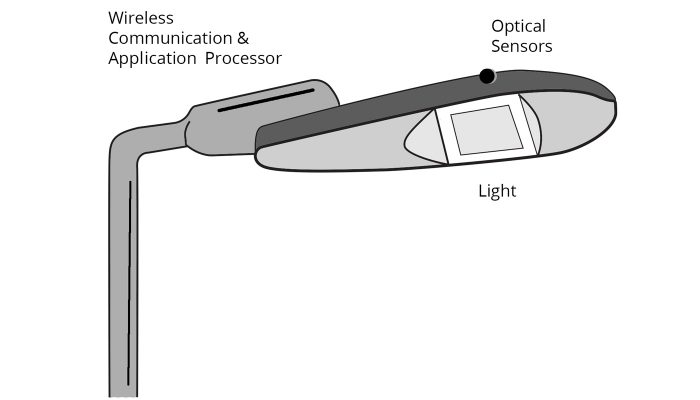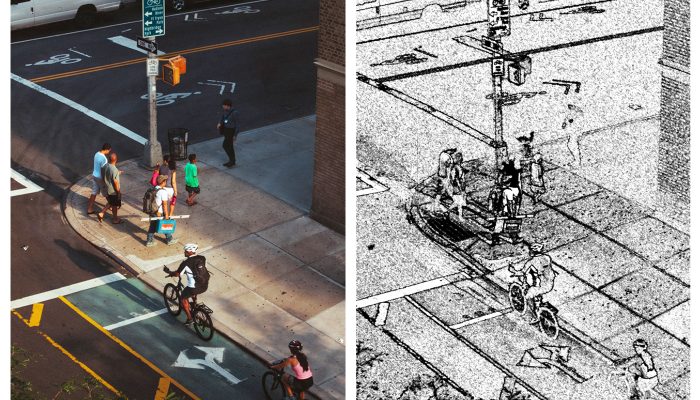City of Philadelphia
- An official website of the City of Philadelphia government
- Here's how you know
- An official website
Learn more about the objective of SmartBlockPHL, the technology that is being used, and how the data will be managed.
What is the goal of the SmartBlockPHL pilot project?
Several organizations already count people, vehicles, bicycles, and other uses of public space in Philadelphia. The Department of Health also runs ten air quality monitoring stations citywide. However, the current methods of collecting this data aren’t very efficient.
The City will use technology to collect that same data in real-time for six months through this project. The goal of SmartBlockPHL is to test ways to collect data accurately and efficiently while prioritizing the highest standards of civil liberties and data privacy.
In practice, this may help the City use smart technologies to create data-driven policies and improve operational management.
For example, by gathering data about how and when people use public space, the City can make better decisions about managing streets and sidewalks. This project will help the City improve safety for vulnerable users and ensure that public spaces accommodate many needs.
How will the pilot be conducted?
The City will install 14 smart streetlights to collect information about pedestrian traffic, street activity, and the environment.
Each smart streetlight will have multiple sensors. The optical sensors will count pedestrians, vehicles, and bicyclists. The environmental sensors will measure temperature, relative humidity, and carbon monoxide.
Where and when will the pilot be conducted?
The pilot will be conducted in Midtown Village at the 100th block of South 13th Street, between Chestnut Street and Walnut Street. This corridor was selected for the pilot due to its mix of dining and retail uses, increased foot traffic, and existing public infrastructure.
The smart streetlights will be installed in July 2021. Starting in December 2021, the sensors will collect real-time information. The pilot will end in late 2022.
How will stakeholders be engaged through the SmartBlockPHL pilot?
The City will share general information with community groups through presentations and the project website.
The City is also working with trusted partners like US Ignite and the SmartCityPHL Project Task Force to develop data management policies. These policies will establish sound and ethical privacy practices, reasonable security measures, and clear data sharing guidelines.
The task force will review and advise on any changes to the privacy or data management guidelines for the duration of the project. These meetings will be open to the public with meeting dates and times posted. The changes will also be shared with the public through the project website.
What data will be collected?
Data will only be collected for specific use cases. For SmartBlockPHL, these use cases are:
No personally identifiable information will be collected or stored through this pilot. Only the metadata will be collected.
What is metadata in the context of this pilot?
Simply put, metadata is data about data. It’s information drawn from the analysis of the physical world, which is then reduced to a form that can’t be connected back to the identity of people or objects.
For example, an optical sensor may detect four people walking down the street from this pilot. The metadata it reports might be:
Who will have access to the collected data, and how will they use it?
At the beginning of the project, the technology provider (Juganu) will have access to calibrate the technical systems. The duration of the “training” period will be no longer than one week.
This training will improve the effectiveness of the systems’ algorithms. For example, the system will better distinguish between people and bicyclists based on their shape, size, and movement.
After this training is complete, no one will have access to the raw data from the sensors. The raw data is immediately anonymized on the edge (within the sensor itself). Only the anonymized metadata will be accessible to the City.
What are the privacy parameters for this pilot?
The SmartBlockPHL project prioritizes data privacy and respect for civil liberties. That means:
A group of independent subject matter experts will review the City’s data management practices and advise the project team throughout the project. SmartCityPHL Project Task Force meetings will be open to the public.
The metadata will be reviewed and released to the public through Open Data Philly after the project ends. It will be available for everyone to download in standard formats or RESTFUL APIs.
What are optical sensors?
Optical sensors measure light and its characteristics and produce electronic signals. The smart streetlights used in SmartBlockPHL are able to analyze these signals and send text-based metadata to the City’s Data Center.
Unlike cameras, the optical sensors do not transmit or store video, and they are not capable of facial recognition.
How does the technology work?
The sensors in the smart streetlights are programmed to detect specific events and collect data about them. The events and data are specific to pre-defined use cases (see “What data will be collected?”). The following image illustrates the parts of the smart streetlight.

The data is captured and processed in the following manner:
The following images show the difference between what a camera detects (original image) and what the sensor converts it to for analysis (edge image). This conversion takes a fraction of a second.

Who owns and manages the equipment and the data?
All equipment, including the lights, sensors, and servers, will be owned and managed by the City.
With the exception of the initial “training” period of one week as the fixtures are installed, no one has access to the raw data from the sensors. All data generated through this pilot will be owned and managed by the City.
The aggregated metadata from the pilot will be released through Open Data Philly.